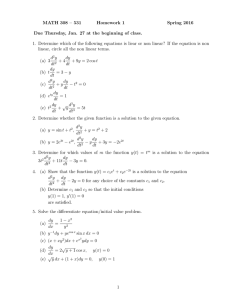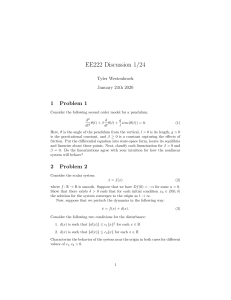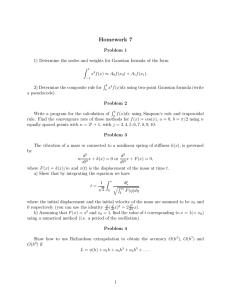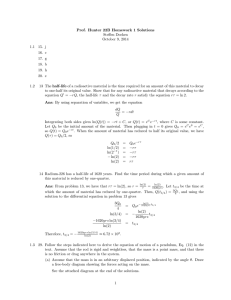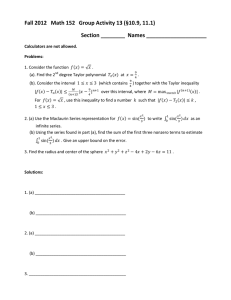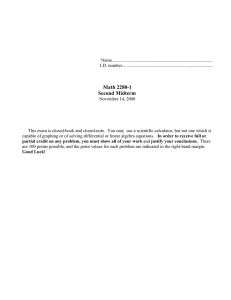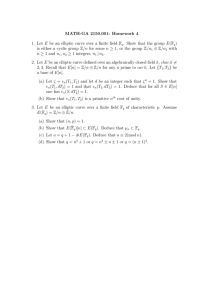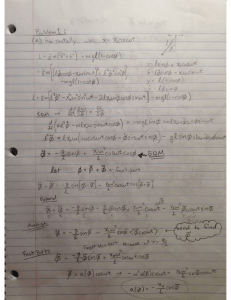The differential equation satisfied by the angular position of an... frictionless pendulum is θ (1)
advertisement
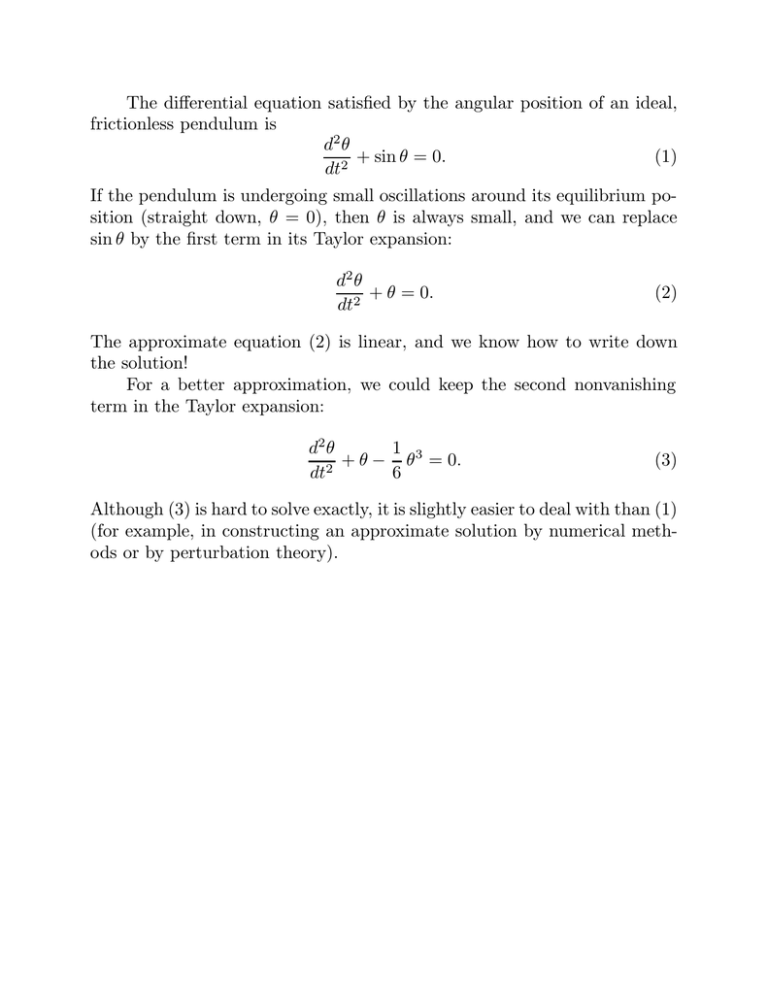
The differential equation satisfied by the angular position of an ideal, frictionless pendulum is d2 θ + sin θ = 0. (1) dt2 If the pendulum is undergoing small oscillations around its equilibrium position (straight down, θ = 0), then θ is always small, and we can replace sin θ by the first term in its Taylor expansion: d2 θ + θ = 0. dt2 (2) The approximate equation (2) is linear, and we know how to write down the solution! For a better approximation, we could keep the second nonvanishing term in the Taylor expansion: 1 3 d2 θ + θ − θ = 0. dt2 6 (3) Although (3) is hard to solve exactly, it is slightly easier to deal with than (1) (for example, in constructing an approximate solution by numerical methods or by perturbation theory).
